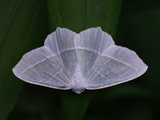
Русские, остановите эту войну! Спасите Свободную Украину!
Russians, stop this war! Save Free Ukraine!
Biodiversity Map
Taxa

Campaea — subordinate taxa:
Taxon count: 2
-
Arthropodaphylum
Click to switch
to select orders
and filters > -
Hexapodasubphylum
Click to switch
to select orders
and filters > -
Insectaclass
Click to switch
to select orders
and filters > -
Lepidopteraorder
Click to set
as the main taxon
and as a base
← of the left panel > -
Geometroideasuperfamily
Click to set
as the main taxon
and as a base
← of the left panel > -
Geometridaefamily
Click to set
as the main taxon
and as a base
← of the left panel > -
Ennominaesubfamily
Click to set
as the main taxon
and as a base
← of the left panel > -
Campaeagenus
Click to set
as the main taxon
and as a base
← of the left panel >
PL
YES
name status: valid name
BioMap ID: 1206170
taxon code: 2628
taxonomy checked: NO
Data on distribution in Poland

Statistics
- Records: 32
- Publications: 1
- Collections: 10
- Publication authors: 1
- Illustrations (iconography): lacking
- Photos (specimen/observation): 6
Taxon description
Motyl na ogół rzadko spotykany w wielu okolicach kraju, znany przede wszystkim z południa Polski, gdzie występuje niekiedy pospolicie. Gatunek ten pojawia się w dwu pokoleniach: motyle latają w VI i VII oraz VIII i IX. Letnie pokolenie gąsienic żyje w VII i VIII, pokolenie zimujące od VIII do VI. Roślinami żywicielskimi gąsienic są buki, graby, wierzby, brzozy i dęby. Motyle świeżo wyklute są ubarwione jasnozielono, łowione mają barwę wypłowiałą, jasne pasy na skrzydłach u okazów takich są bardzo mało widoczne. Cechą charakterystyczną motyli tego gatunku jest znaczna zmienność wielkości, widoczna u osobników łowionych w tym samym czasie i okolicy. Poczwarki przebywają w oprzędach na ziemi. Częściowe trzecie pokolenie motyli uzyskuje się w hodowli w X i XI.
[71: Campaea margaritata (Linnaeus 1768) – ostrolot muszlowiak]
[71: Campaea margaritata (Linnaeus 1768) – ostrolot muszlowiak]
Photos
... browse
 Campaea
Campaeamargaritata
 Campaea
Campaeamargaritata
 Campaea
Campaeamargaritata
 Campaea
Campaeamargaritata
 Campaea
Campaeamargaritata
 Campaea
Campaeamargaritata
External data sources
- Ostatnie rekordy
-
1034557
 ⊡
⊡ Geometridae: Campaea margaritata, PL, Nizina Mazowiecka, mazowieckie, Warszawa, Warszawa, Wólka Węglowa, UTM DC99, 2018, leg. S. Pietrzyk
Geometridae: Campaea margaritata, PL, Nizina Mazowiecka, mazowieckie, Warszawa, Warszawa, Wólka Węglowa, UTM DC99, 2018, leg. S. Pietrzyk -
1032592
 ⊡
⊡ Geometridae: Campaea margaritata, PL, Pojezierze Mazurskie, warmińsko-mazurskie, Olsztyn, Olsztynek, Maróz, UTM DE52, 2016, leg. S. Pietrzyk
Geometridae: Campaea margaritata, PL, Pojezierze Mazurskie, warmińsko-mazurskie, Olsztyn, Olsztynek, Maróz, UTM DE52, 2016, leg. S. Pietrzyk -
1028162
 ×
× Geometridae: Campaea margaritata (Heintze 1990)
Geometridae: Campaea margaritata (Heintze 1990) -
869551
 ⊡
⊡ Geometridae: Campaea margaritata, PL, Pojezierze Pomorskie, pomorskie, Bukowiny, UTM CE35, 2009, leg. S. Łuczkowski
Geometridae: Campaea margaritata, PL, Pojezierze Pomorskie, pomorskie, Bukowiny, UTM CE35, 2009, leg. S. Łuczkowski -
846853
 ⊡
⊡ Geometridae: Campaea margaritata, PL, Pieniny, małopolskie, Cyrlowa Skała, UTM DV57, 2002
Geometridae: Campaea margaritata, PL, Pieniny, małopolskie, Cyrlowa Skała, UTM DV57, 2002 -
846683
 ⊡
⊡ Geometridae: Campaea margaritata, PL, Bieszczady, podkarpackie, Zatwarnica, UTM FV15, 2002, leg. G. Banasiak
Geometridae: Campaea margaritata, PL, Bieszczady, podkarpackie, Zatwarnica, UTM FV15, 2002, leg. G. Banasiak -
845704
 ⊡
⊡ Geometridae: Campaea margaritata, PL, Górny Śląsk, opolskie, Ligota Dolna, UTM BA99, 2006, leg. T. Blaik
Geometridae: Campaea margaritata, PL, Górny Śląsk, opolskie, Ligota Dolna, UTM BA99, 2006, leg. T. Blaik -
845703
 ⊡
⊡ Geometridae: Campaea margaritata, PL, Górny Śląsk, opolskie, Ligota Dolna, UTM BA99, 2006, leg. T. Blaik
Geometridae: Campaea margaritata, PL, Górny Śląsk, opolskie, Ligota Dolna, UTM BA99, 2006, leg. T. Blaik -
840178
 ⊡
⊡ Geometridae: Campaea margaritata, PL, Nizina Wielkopolsko-Kujawska, kujawsko-pomorskie, rez. Las Piwnicki nature reserve, UTM CD38, 2001, leg. J. Buszko
Geometridae: Campaea margaritata, PL, Nizina Wielkopolsko-Kujawska, kujawsko-pomorskie, rez. Las Piwnicki nature reserve, UTM CD38, 2001, leg. J. Buszko -
838910
 ⊡
⊡ Geometridae: Campaea margaritata, PL, Wyżyna Lubelska, lubelskie, Świdnik, UTM FB17, 2008, leg. J. Buszko
Geometridae: Campaea margaritata, PL, Wyżyna Lubelska, lubelskie, Świdnik, UTM FB17, 2008, leg. J. Buszko - ... more
- Powiązane publikacje
-
Heintze J. 1990. Motyle Polski (wydanie drugie uzupełnione). Wydawnictwa Szkolne i Pedagogiczne, Warszawa. 302 pp.
 Show records
Show records
- Powiązane zbiory
-
Banasiak G.
 Show records
Show records -
Blaik T.
 Show records
Show records -
Bury J.
 Show records
Show records -
Fuglewicz E. et S.
 Show records
Show records -
Józefczuk J. et Sz.
 Show records
Show records - ... more
- Powiązani autorzy
-
Heintze J.
 Show records
Show records





